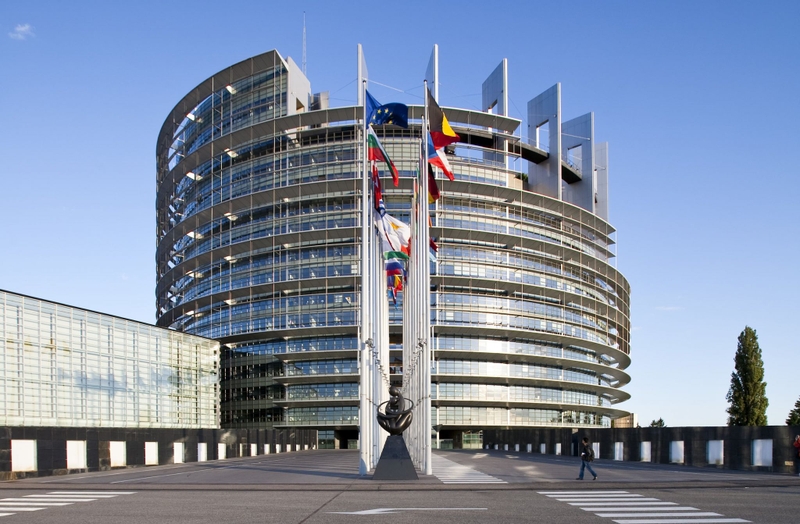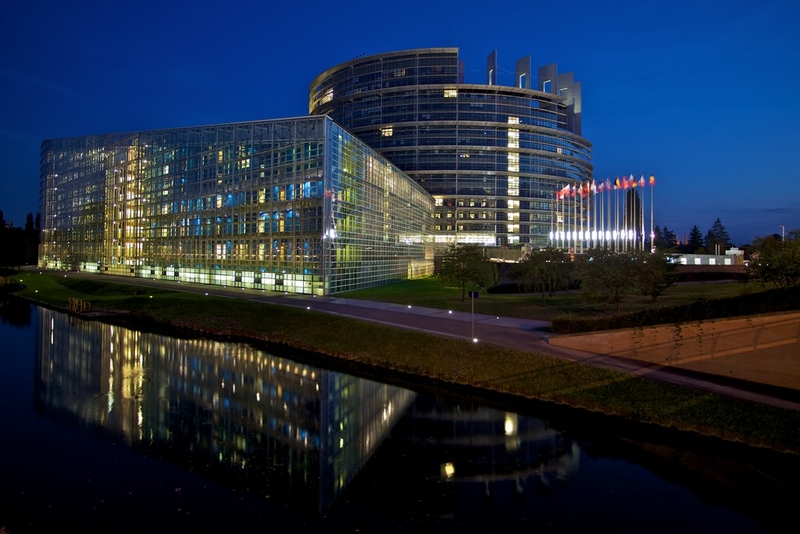The European Parliament in Strasbourg
The beating heart of Europe Strasbourg is European, thanks to its history and location. At the intersection of roads and influences, but also of conflicts, Strasbourg has always played a European role. And so it was quite natural that, after the Second World War, the city was chosen as a symbol of reconciliation to host the emerging European institutions. In 1949, it became the seat of the Council of Europe, and then, in 1958, of the European Parliamentary Assembly (renamed “European Parliament” in 1962).



Over the years, the institution has undergone profound changes: from an assembly comprising nominated members, it was transformed into an elected parliament, recognised as a major political player of the European Union. The European Parliament currently represents about 450 million European citizens. It has 705 Members, elected for 5-year terms. It holds legislative, budgetary and political supervisory powers. The European Parliament is the largest parliamentary assembly elected by direct universal suffrage in the world.
An architectural gem Designed by Architecture Studio, the huge glass-and-metal building, which has housed the European Parliament since 1999, is very impressive. It is one of Strasbourg’s architectural gems. Beautifully reflected in the water, its huge glass façade, measuring 13,000 sq. metres, symbolises the democratic transparency of the European Union. Its hollow oval tower, 60 metres high, opens out towards the Cathedral. The top of the tower appears unfinished, to symbolise the European project, a perpetual work in progress. The imposing inner courtyard is a masterpiece of curves. The building is structured around three interior ‘avenues’, with the main one designed as a winter garden featuring a forest of philodendrons. With a total surface area of 220,000 sq. metres, it includes the Chamber with more than 750 seats (the largest in Europe), 1,133 offices and 18 commission rooms used by the Members of the European Parliament elected by the Member States of the European Union. Tours A visit to the Chamber of the European Parliament, or Hemicycle, is an unrivalled opportunity to soak up the unique atmosphere of this large transnational parliament. The Hemicycle, the largest in Europe, hosts the most important debates and has provided the backdrop for many historic votes. All visits of the Parliament also include the Parlamentarium Simone Veil. The dynamic and interactive exhibition gives citizens of all ages insight into the role of the European Parliament, and helps them understand the functioning of the European project.
Bâtiment Louise Weiss
Allée du Printemps
67000
Strasbourg
Visiting European Parliament
Curious to enter the hemicycle of the European Parliament in Strasbourg? Visits are free and possible all year round. The new Parlamentarium Simone Veil exhibition gives citizens of all ages a practical insight into the role of the European Parliament and the duty of its Members. Visitors can see the impact that European decision making has on their daily lives. After visiting the European Parliament, visitors can complement their experience with a stop-over at the Alsace-Moselle Memorial to find out more about the unique history of a region that has been
shunted between two countries; from life on the Maginot Line and the destruction of World War II, to Franco-German reconciliation and the reconstruction of Europe.
The European Parliament in Strasbourg is open to visitors six days a week throughout the year. Visits are always free of charge. During your visit, you can see the European parliamentary chamber – the Hemicycle, the Parlamentarium Simone Veil and several exhibitions. In Strasbourg, Members of the European Parliament meet twelve times a year during plenary sessions to debate and vote on European legislation. As a visitor, you can attend the session to see and listen to your representatives speak from the visitor gallery.
Opening hours
OUTSIDE PLENARY SESSIONS: individual visitors without reservation, Monday to Friday between 9am and 6pm (last admission 5pm). Saturday 9.30am-12pm and 1pm-6pm (last entrance 5pm).
DURING THE SESSIONS
A limited number of places are available for individual visitors
to follow the session for a maximum of one hour. Places are allocated on a first-come, first-served basis. No prior
will be taken into account.
Monday 9.30am-12pm and 5pm-6pm
Tuesday, Wednesday 9am-12pm and 3pm-6pm
Thursday 9am-12pm
Friday 9am-6pm (last admission 5pm)
Saturday 9am-12pm and 1pm-6pm (last entry 5pm)
Information
Take a tour with a multimedia guide available in the 24 official languages of the European Union.
Access conditions
-
Bus line H (direct line).
Bus lines 6, 30 and 72: ‘Droits de l’Homme’ stop (a 10-minute walk from the Parliament). -
Tram line E: ‘Parlement Européen’ stop.
